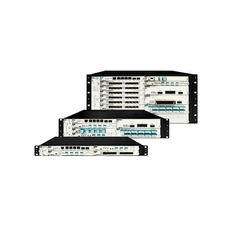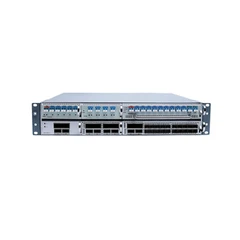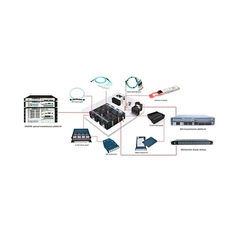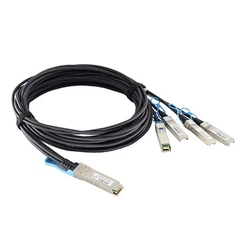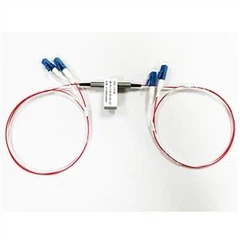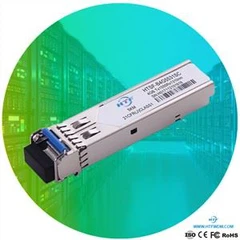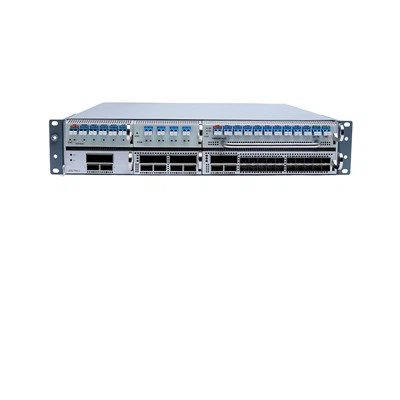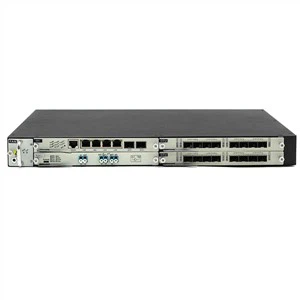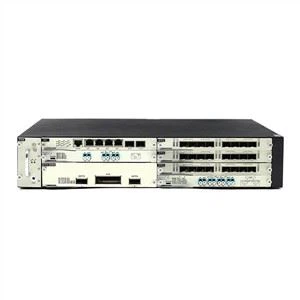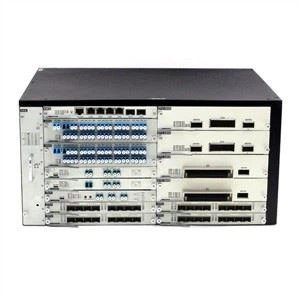Optical fiber network card, optical fiber Ethernet network card or optical fiber Ethernet adapter. The transmission protocol is TCP / IP Ethernet protocol, which is generally connected with the fibre channel switch through fiber optic cable. The interface type is divided into optical port and electrical port. Optical ports usually transmit data through optical fiber cables. The interface modules are generally SFPs and GBICs, and the corresponding interfaces are SC and LC. The interface type of electric port is usually DB9 pin or HSSDC.
100m optical fiber network card is a network adapter with 100Mbps Fast Ethernet optical fiber access, supporting full duplex, Half duplex; it is especially suitable for places where the distance of access information point exceeds the access distance of class 5 cable (100m), and can completely replace the network structure of external photoelectric converter with RJ45 interface Ethernet card, providing users with reliable solutions of fiber to home and fiber to desktop. The user can select the optical fiber interface parameters (including connector, single / multi-mode optical fiber, working distance, etc.) according to the application situation.
The 32 / 64 bit PCI bus network interface card is used to establish the connection between PC or server and switch to solve the bottleneck problem of server network card in Intranet mode. The product provides optical fiber transmission medium interface, 32 / 64bit / 66MHz compact PCI bus interface, which truly supports efficient transmission; integrated communication control chip relieves the pressure of CPU data processing; in addition, it also provides VLAN tag, data stream priority, power management and other intelligent processing capabilities; at the same time, rich driver library supports a variety of operating system platforms.
Why use 10G NIC to build NAS storage network?
In NAS storage network, the main function of network card is to help NAS realize networking, and allow authorized end users to store and read data in NAS through network card.
At present, with the innovation of technology, the NAS memory with Gigabit speed can not meet the high-speed transmission requirements of large files and multimedia data. At the same time, considering that 10G network devices (such as 10G network switches, 10G Optical modules, etc.) have been widely used in large data centers and other fields, and the 10G network market has been mature, it is imperative to upgrade the existing NAS storage network to 10G network.
Nowadays, in this era of data explosion, the substantial growth of data undoubtedly brings unprecedented challenges to SMEs and professionals. Even in the case of cloud storage, the risk of data loss is also very high. So many enterprises turn to NAS storage.
What is NAS?
The full name of NAS is network attached storage. In short, NAS is a storage server. NAS devices can store and share data from multiple computers. It can access its data in the coverage area of network storage, and it can also be accessed remotely through the Internet.
NAS as a storage server, its main function is storage, forming a home or office data center. The biggest difference between NAS storage and non NAS storage is the sharing of storage space, on which many functions can be realized: data synchronization, photo sharing, music library, video library, download, data backup and so on.
Three characteristics of NAS storage:
1. Super capacity -- NAS storage has its unique expansibility. Compared with other common storage technologies, its storage capacity has extremely high scalability. It can stack multiple hard disk capacities to expand the storage structure.
2. Data sharing: all devices can access the data stored in NAS as long as they can connect with NAS. You can directly access NAS on mobile phones, laptops, tablets, smart TVs and other devices, just like using local data, using the data stored in NAS. NAS equipment has a high value of scene reuse, which can realize the continuity of office in a LAN. That is to say, when the data is stored in the same computer on the same LAN, it can be read quickly.
3. Secure Storage NAS has powerful data backup function. Compared with other network storage, it ensures data security. Because of remote access, users can back up data to NAS system at any time, and even if the terminal equipment is lost or damaged, the data will not be lost, ensuring the absolute security of data.
Network storage structure can be roughly divided into three types: Direct Attached Storage (DAS), Network Attached Storage (NAS) and Storage Area Network (SAN).
Advantage:
NAS is a disk array connected by network cable, which has all the main characteristics of disk array: high capacity, high efficiency and high reliability.
1. NAS is easy to install and fast
2. Easy to maintain
3. Very good scalability
4. It has faster response speed and higher data bandwidth
5. Reducing the requirements of the server can greatly reduce the cost of the server, which is conducive to the popularization and application of high-performance storage
system in a wider range
6. Support different operating system platforms
Disadvantages:
1. NAS devices and clients are connected through the enterprise network, so the data backup or storage process will occupy the bandwidth of the network. This will inevitably affect other network applications on the enterprise internal network; sharing network bandwidth becomes the main problem limiting NAS performance. Therefore, the data transmission rate of NAS system is not high, and Gigabit Ethernet can only reach 30 ~ 50MB / s.
2. NAS scalability is limited by device size. It is very easy to add another NAS device, but it is not easy to merge the storage space of two NAS devices seamlessly, because NAS devices usually have unique network identifier, and the expansion of storage space is limited. It can only provide file storage space and can not fully meet the requirements of database applications.
3. NAS access needs file system format conversion, so it is at the file level. It is not suitable for block level applications, especially for database systems that require bare devices.
4. The cost of early installation and equipment is high.
What is needed to build a 10 Gigabit NAS storage network?
The 10 Gigabit NAS storage network is mainly composed of the following components and devices:
1. 10G Optical fiber network card
10G fiber network card is the key to build 10 Gigabit NAS storage network. Therefore, it is necessary to choose a suitable 10g NIC for your NAS storage.
2. 10G network switch
In NAS storage network, 10G network switch is an intermediate device to help NAS storage and terminal equipment realize data transmission.
3. Transmission carrier: optical fiber cable and optical device
When building a 10 Gigabit NAS storage network, ensure that the transmission carrier - optical fiber cables and optical devices are compatible with your 10G network card and 10g switch. According to the actual needs, you can choose network jumper or fiber jumper to connect the corresponding switches and network cards in the storage network. If you plan to build a 10 Gigabit NAS storage network on the basis of the existing copper cable network, it is recommended that you use CAT6 or cat6a network jumper as the transmission carrier; if your equipment is an SFP + 10g switch or a SMP + 10G network card, you need to use optical fiber jumper and 10G Optical module to connect your network card and switch. If the transmission distance is less than 10 Gigabit, you can also use the sf7 + switch directly.
How to build 10 Gigabit NAS storage network with optical network card?

HTF's products are customized, the quality is guaranteed, and the accessories are imported.
Contact: support@htfuture.com
Skype :sales5_ 1909,WeChat :16635025029

